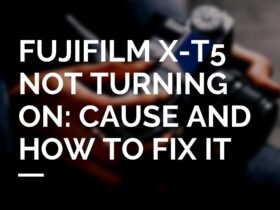I love instant cameras. They are fun, easy to use, and capture memories in a unique way. But sometimes, I want something more than the FUJIFILM INSTAX Wide 300, which is one of the most popular instant cameras on the market. That’s why I decided to explore some of the best alternatives to the FUJIFILM INSTAX Wide 300 and share them with you in this article. Here are my top three picks for instant cameras that offer different features, sizes, and prices than the FUJIFILM INSTAX Wide 300.
1. FUJIFILM INSTAX SQUARE SQ1

I’d like to shed some light on the FUJIFILM INSTAX SQUARE SQ1, which I find to be a splendid alternative to the FUJIFILM INSTAX Wide 300, especially for those who have a penchant for square format photos.
1. Film Format
The film format can make all the difference in instant photography. With the SQ1, I’ve embraced the Instax Square film’s dimensions of 3.4 x 2.8 inches, with a picture size that is a perfect square of 2.4 x 2.4 inches. It’s compact and perfect for those snapshots that look great in a symmetrical format. In contrast, the Wide 300 uses the larger Instax Wide film, which gives you a more panoramic 4.3 x 3.4 inches size, with the image area extending to 3.9 x 2.4 inches. While the Wide film provides more space, the Square film’s neatness at about $17 for 20 sheets is quite appealing, even compared to the Wide’s $19 for the same amount.
2. Image Quality
Image quality is paramount, and that’s where the SQ1 shines. With its superior f/12.6 aperture, I’ve captured more light, leading to crisper images than the f/14 aperture on the Wide 300. The selfie mode on the SQ1 is a game-changer for me, enabling clearer selfies and close-ups just by twisting the lens. While the Wide 300’s close-up lens attachment is functional, it does not offer the same ease of use.
3. Camera Size and Style
A camera’s aesthetics and ergonomics are close to my heart. The SQ1, at 13.8 ounces and dimensions of 5.1 x 4.7 x 2.3 inches, is a marvel of modern design—lightweight, sleek, and available in tasteful colors like Glacier Blue or Chalk White. On the other hand, the Wide 300 feels bulkier at 21.6 ounces and 6.6 x 3.7 x 4.7 inches, with a retro style that may appeal to vintage enthusiasts but doesn’t quite match the SQ1’s minimalist chic.
4. Lens and Focus
In my practice, the lens and focus systems are critical. The SQ1 with its 65.75 mm focal length and motor-driven two-range focus system is incredibly user-friendly, automatically adjusting between normal and selfie modes. The Wide 300’s 95 mm focal length and manual focus, requiring a switch between normal and landscape modes, calls for a bit more effort to get that perfect shot.
5. Battery Type and Life
The longevity of a camera’s power source is something I monitor closely. The SQ1 operates on two CR2 lithium batteries and has impressed me with its ability to last for about 30 film packs. Meanwhile, the Wide 300 uses four AA alkaline batteries and trails behind, offering life for about 10 film packs. Additionally, the SQ1’s intelligent auto power-off feature saves energy, which the Wide 300 unfortunately lacks.
6. Additional Features
For the tech-savvy photographer, additional features can enhance the photography experience. Both cameras boast essentials like built-in flashes, LCD displays, and film counters. Yet, the SQ1’s exposure compensation feature allows for creative control over brightness, and its compatibility with the Instax UP! app lets me store and share my photos digitally—a capability not available with the Wide 300.
7. Price
The financial aspect is always a consideration. Priced at $119, the SQ1 is a slight investment over the $109 Wide 300. But for those extra dollars, the SQ1 offers a more feature-rich, user-friendly experience, and better image quality, which to me, represents money well spent.
2. FUJIFILM INSTAX Mini 90 Neo Classic

I can confidently say that if you’re in the market for an instant camera that blends creative flexibility with exceptional image quality, you’d do well to consider the FUJIFILM INSTAX Mini 90 Neo Classic as a formidable alternative to the FUJIFILM INSTAX Wide 300.
1. Film Format
In my professional experience, the FUJIFILM INSTAX Mini 90 Neo Classic excels with its Instax Mini film, measuring 62 x 46 mm. It’s not only more affordable but also easier to find in stores. Conversely, the Wide 300 uses the larger Instax Wide film with a size of 99 x 62 mm, offering a bigger area for image capture at the expense of increased film cost and reduced availability.
2. Image Quality
The lens on the Mini 90 is of higher quality, featuring a greater aperture range which allows for more nuanced photo brightness adjustments. This grants me the flexibility to produce optimally exposed images in a variety of lighting situations. The Wide 300, with its simpler lens system and lack of exposure compensation, tends to be less adaptable, occasionally resulting in images that are not correctly exposed.
3. Camera Size and Style
The Mini 90 boasts a compact and lightweight design, which is not just convenient but also sophisticated with its retro-inspired look. The Wide 300, while functional, has a more cumbersome form factor and a less refined aesthetic, making the Mini 90 the more fashionable choice among the two.
4. Lens and Focus
I find the Mini 90‘s retractable lens and motor-driven focus system, which adjusts from macro to landscape modes, to be incredibly useful for various photographic scenarios. The Wide 300‘s fixed lens and manual focus system, offering normal and landscape modes, doesn’t provide the same level of flexibility.
5. Battery Type and Life
The Mini 90 uses a rechargeable lithium-ion battery, capable of shooting up to 10 film packs or approximately 100 shots per charge. This is not only cost-efficient but also eco-friendly. In contrast, the Wide 300 uses four AA alkaline batteries, which can also last for roughly the same number of shots but may not be as environmentally considerate over time.
6. Additional Features
As for extra features, the Mini 90 comes with several creative modes such as party, kids, double exposure, bulb exposure, and the option to control the flash. It also includes a remote control for added convenience during self-portraits or group photos. The Wide 300 lacks these modes, offering basic functionalities like a tripod socket and a close-up lens attachment.
7. Price
When it comes to pricing, the Mini 90 has a tag of around $120, reflecting its enhanced features and the savings from using Mini film over time. The Wide 300, at about $80, is the more budget-friendly initial purchase, but it might lead to higher long-term costs due to the price of Wide film.
3. Polaroid Now Generation 2 i-Type

Here’s how Polaroid Now Generation 2 i-Type is a good alternative to Fujifilm Instax Wide 300:
1. Film Format
The Polaroid Now Generation 2 i-Type camera uses the iconic Polaroid square format film, measuring 3.4 x 4.3 inches with a picture area of 2.4 x 2.4 inches. The film, compatible with i-Type and 600 films, is available in various colors and special editions, enhancing the creative possibilities. In contrast, the FUJIFILM INSTAX Wide 300 uses the instax WIDE film of the same size but with a larger picture area of 2.4 x 3.9 inches, limited to color and monochrome variants. The Polaroid’s film format offers a classic, nostalgic feel, while the FUJIFILM’s delivers a contemporary, panoramic flair.
2. Image Quality
With an autofocus system that switches between two lenses based on subject distance, the Polaroid Now Generation 2 i-Type ensures sharp images, even without flash usage. Its exposure compensation control also enables photo brightness adjustments. The FUJIFILM INSTAX Wide 300, featuring a fixed focus lens with two focus zones, requires manual focus mode selection and offers a basic brightness control with four levels. The Polaroid’s sophisticated flash system, adjusting to ambient light, promises a more refined image quality than the FUJIFILM’s more basic approach.
3. Camera Size and Style
The Polaroid Now Generation 2 i-Type boasts a modern, rounded design with an easy-to-grip side and a user-friendly control panel, made with 40% recycled materials. It comes in an assortment of appealing colors. The FUJIFILM INSTAX Wide 300 presents a traditional, bulky design in black with silver accents, featuring a simple button control panel. The Polaroid’s compact and lightweight design provides a more contemporary and eco-conscious option compared to the bulkier FUJIFILM.
4. Lens and Focus
The retractable lens on the Polaroid Now Generation 2 i-Type camera, with focal lengths of 3.7 or 4 inches, and a convenient self-timer feature for delayed shots, lends flexibility to photographers. The FUJIFILM INSTAX Wide 300’s lens system, with a constant focal length of 3.7 inches and a separate close-up lens, offers less versatility but remains functional for standard shooting scenarios.
5. Battery Type and Life
A high-performance lithium-ion battery powers the Polaroid Now Generation 2 i-Type, with USB-C charging capabilities, supporting approximately 80 shots per charge. The FUJIFILM INSTAX Wide 300 uses four AA batteries, affording around 100 shots per set. While both cameras offer a similar number of shots per charge or battery set, the Polaroid’s rechargeable battery is more eco-friendly and cost-efficient over time.
6. Additional Features
The Polaroid Now Generation 2 i-Type stands out with its connection to the Polaroid app via Bluetooth, granting access to numerous creative modes and a lens filter kit for artistic shooting. The FUJIFILM INSTAX Wide 300 remains focused on the basics, lacking these advanced creative features but maintaining a straightforward shooting experience.
7. Price
Pricewise, the Polaroid Now Generation 2 i-Type is available for $119.99, reflecting its added functionalities and creative potential. The FUJIFILM INSTAX Wide 300, at $109.45, is a more budget-friendly option that provides a simpler instant photography experience without the added creative modes of the Polaroid.











Got a Question?
Find us on Socials or Contact us and we’ll get back to you as soon as possible.